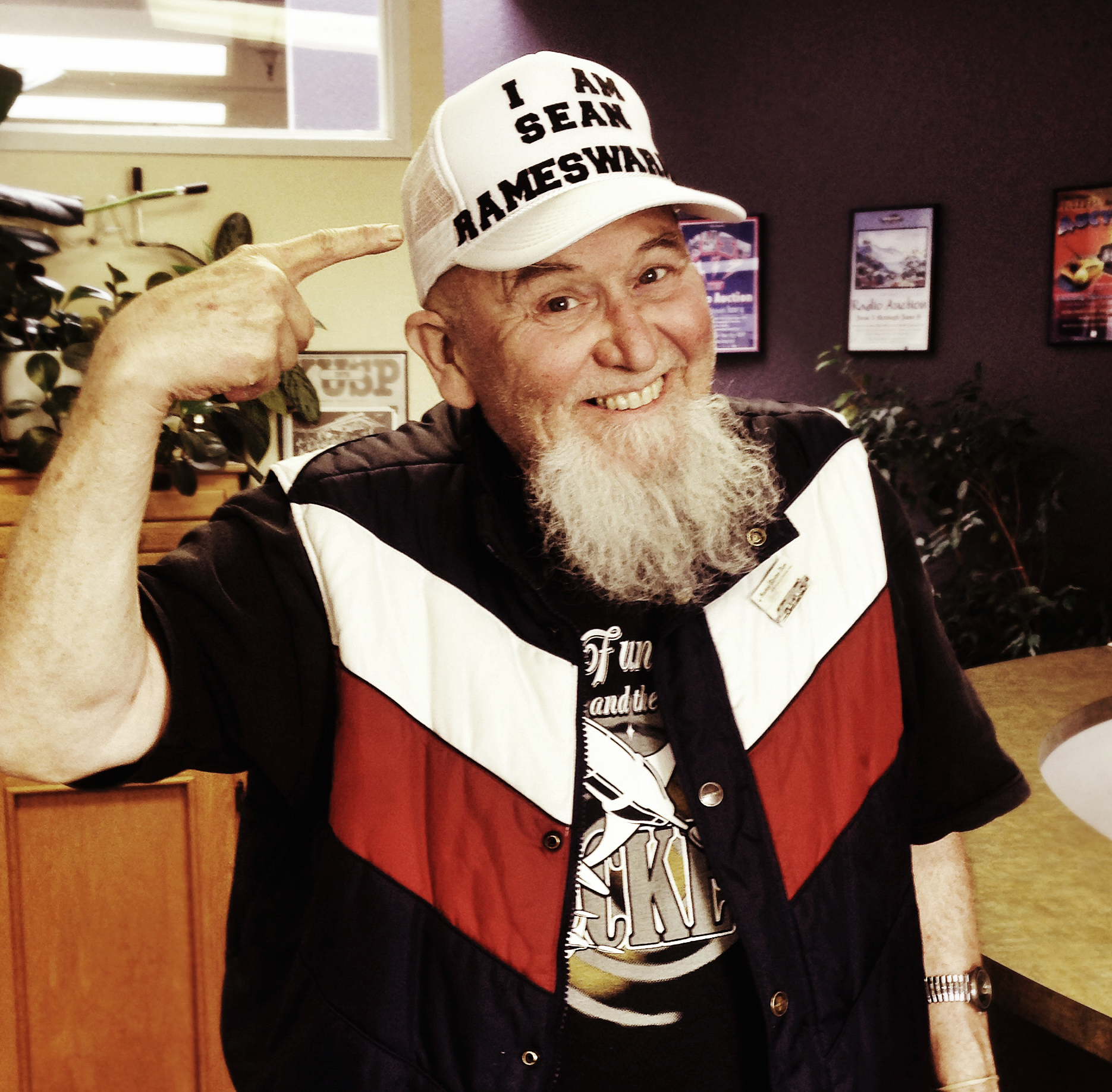Crop of local TV shows takes creative leaps to reach younger viewers
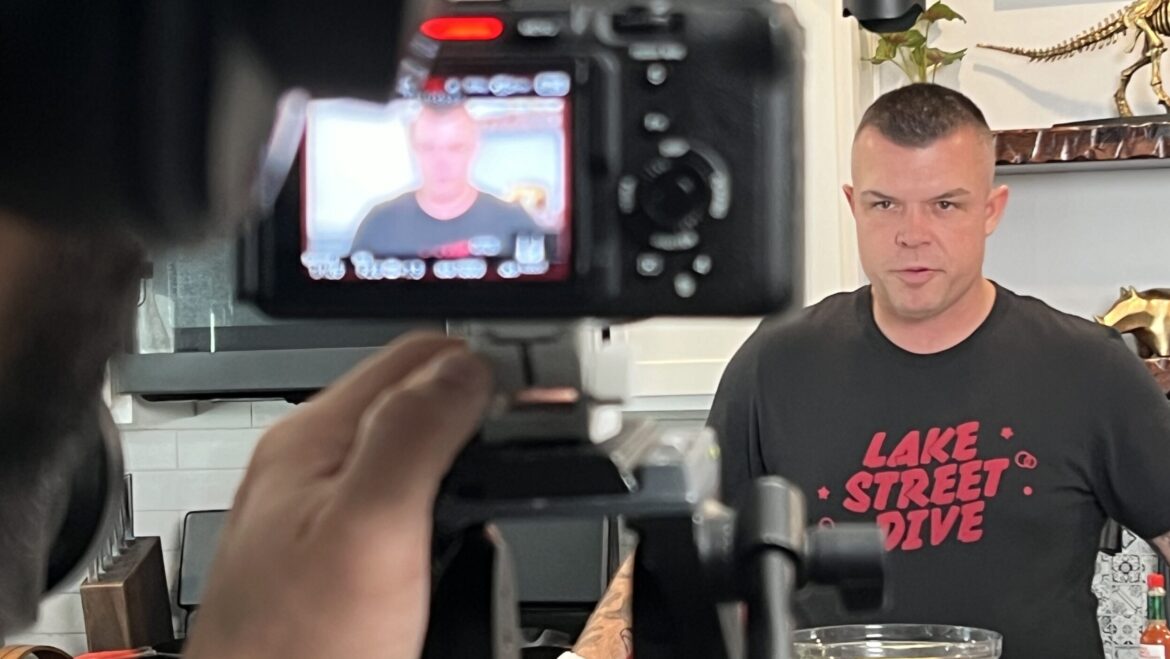
Tarryn Mento
Host Matt Read prepares to cook some dope food on an episode of “Spatchcock Funk.”
It’s 11:17 on a Sunday morning and chef Matt Read is sucking on a crawfish while filming Spatchcock Funk, a new kind of cooking show from WCNY in Syracuse, N.Y.
Read yanks out the meat, slurps the carcass and tosses it to the floor without a second glance.
It’s raw, it’s fun and younger viewers are eating it up.
Public TV stations like WCNY are experimenting with bold formats in a bid to draw younger audiences. From the no-holds-barred party-planning of Spatchcock Funk to NJ PBS’s veganism TV special and a Nashville PBS series of YouTube shorts hosted by local influencers, these innovative programs embrace the look, style and tone of digital-first storytelling. WCNY is also investing in a new style of political talk show that aims for viewers in the middle of the political spectrum.
The experimentation comes as the national public TV audience grows increasingly older, leaving stations dependent on an aging support base. Data shared by PBS shows the median age of its prime-time audience is 72, an increase from 64 a decade ago. Station leaders in Syracuse, Nashville and Newark, N.J., say their creative leaps are bringing younger adults back into the fold.
Spatchcock Funk drew nearly double the 25- to 54-year-old viewers of WCNY’s other prime-time shows. At NJ PBS, the YouTuber-hosted Vegan Pop Eats special was the biggest local program debut the station has ever seen. Nashville’s Jaunts on YouTube Shorts found traction with 35- to 45-year-olds.
Public TV stations that stick with traditional formats will continue to draw the same core viewers, said WCNY CEO Mitch Gelman. “That’s not going to position you well for sustainable growth into the future.”
WCNY got a taste of that when pitching its traditional cooking programs to a potential underwriter. Instead, the contact steered the station toward the unconventional Spatchcock Funk series on YouTube. That’s where college professor Read and co-creator Alex DeRosa, creative director at an educational platform, first launched their adventurous take on how to host themed gatherings with “dope food and strong drinks.”
Read, in a T-shirt that shows off his inked forearms, drops edgy jokes with a dry wit while whipping up diverse flavors and cultural references into a themed menu. From behind the camera, DeRosa chimes in with historical and cultural context — and occasionally pokes fun at his pal — in on-screen producer’s notes.
DeRosa said the idea for the show, which the pair cooked up over drinks on a boat, came from their own love of bringing people together with a good party.
“When I met Matt, he had a whole separate group of friends, and so did I, and so we kind of meshed those groups, and now everyone’s close. And so there’s something important about that,” he said.
More than party planning
WCNY’s Gelman said he instantly saw the appeal for younger adults.
“Matt and Alex are teaching them how to throw parties for their generation, as opposed to the types of parties that you know Martha Stewart was teaching our parents how to throw for their generation,” he said.
Read said Spatchcock Funk goes a step further by weaving in social commentary on issues the co-creators genuinely care about. Their “Boss Bitch Brunch” episode celebrated Read’s wife reaching the C-suite at her advertising agency.
“That gave us a good opportunity… to be like, ‘Hey, man, like equality and destroying the gender pay gap and all that stuff is important to us,” he said.
They tackled more mature issues when a song for their throwback ‘90s party implied using alcohol to sleep with women.
“We do not condone or support that at the Funk,” Read said into the camera. “You want to get people naked and have sex? Be funny. Show a lot of respect. Be cool. That’s how it’s done.
The Spatchcock Funk formula is resonating with the younger demographic. When the series debuted on WCNY last year, 92% more 25- to 54-year-old viewers tuned in compared to the station’s other locally produced programs, according to WCNY.
Spatchcock Funk is expanding its reach through distribution by the National Educational Telecommunications Association. Its first season premiered with pick ups by stations that reach 31% of U.S. households, according to TRAC Media carriage data provided by WCNY. “That’s exciting growth,” Gelman said.
The second season, which debuted on WCNY in late March, will be available through NETA on May 1.
“From our perspective, the greatest risk is not to take any risks,” Gelman said.
Appetite for innovation
That’s a mentality shared by NJ PBS GM Joe Lee. He joined Gelman at a WCNY-led panel at the 2024 NETA conference that focused on drawing new audiences.
“Our focus has been on what new audiences, in a broad sense, can we begin to reach out to that’s beyond sort of age demographics,” Lee said in an interview. “Who are we not serving currently, or who is familiar with us that we might be able to bring back into the fold?”
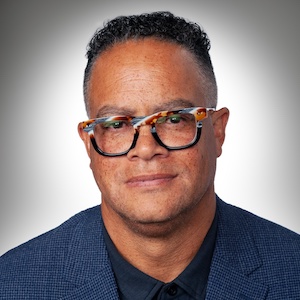
The station dug into that question with an in-depth examination of its audience as part of the Digital Transformation Project backed by CPB and Poynter.
NJ PBS surveyed a random sampling of adults in the New York City area to identify its existing viewers as well as potential audiences. For the latter group, the research pointed to older millennials and younger GenXers who were familiar with public media but not yet avid viewers. Almost two-thirds of the people in this audience segment were African American.
That awareness and an appetite for innovation led to Vegan Pop Eats, a special on the plant-based lifestyle that was growing in popularity among African American communities.
Like Spatchcock Funk, the show got its start as an online series. Hosted by Black female YouTuber Angela Yvonne, the broadcast program dug into the plant-based lifestyle — such as urban farming and foraging for ingredients — and leaned into the digital video aesthetic.
“Like the host talking into her phone as if she’s talking to a social media audience, the graphics layouts, the mosaic, screenshots, tiles on screen, … just using the way that people are used to seeing content on platforms like TikTok and YouTube,” Lee said. Yvonne pitched the idea to NJ PBS.
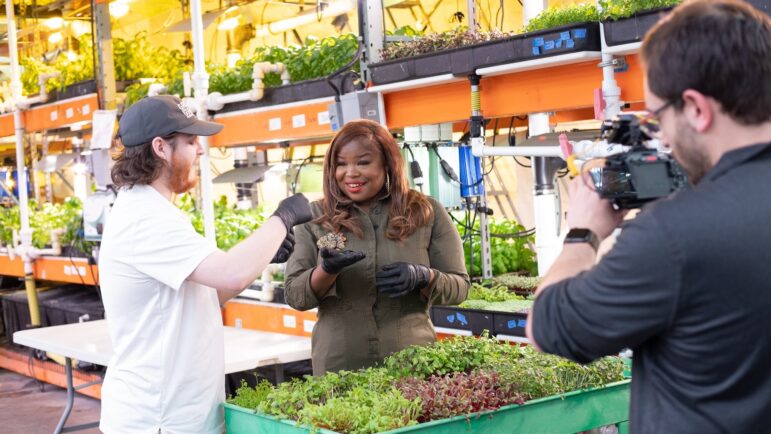
When the special debuted on TV in June 2024, it drew 30,000 viewers — far exceeding expectations. Debuts of NJ PBS’ local programs typically attract 5,000 to 10,000 viewers, Lee said.
“That was a pretty good indication that we hit the target audience, or we developed something that people were interested in, and we felt good about that one,” he said.
Vegan Pop Eats was nominated for a Webby Award this year. NJ PBS is producing another episode to premiere this June but the future of the program depends on funding.
“It’s still too new to say that it’s sustainable,” Lee said. “But I think what the data that we do have suggests is that what we’re doing is wanted and appreciated, and we’ll see if the support comes later.”
But he said it’s better odds to risk trying something entirely different than playing it safe.
“Experimentation, I think, is where we are in our industry,” Lee said.
Transforming ‘Tennessee Crossroads’
While WCNY and NJ PBS drew inspiration from outside sources to innovate, Nashville PBS looked inward.
One of its longest-running, most-watched TV shows, Tennessee Crossroads, has profiled people and places from across the state since 1987.
Shane Burkeen, the station’s senior director of brand, digital & marketing, said TV episodes uploaded to the show’s YouTube channel play well with older adults, but he was eyeing a chance to create a digital-first offering for a younger audience.
Working with EP and Senior Director of Content Megan Grisolano, the pair transformed the half-hour show’s concept of exploring local spots to the quick-hit vertical format of YouTube Shorts.
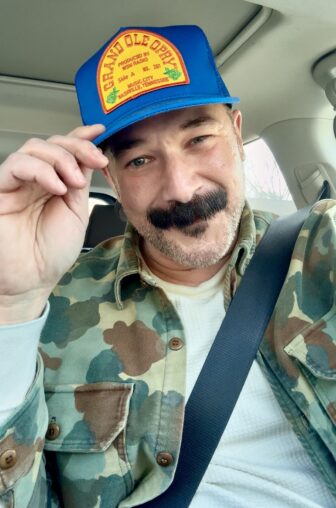
“We actually hired two local influencers that were already doing content like this to … get a crossover between the audience,” Burkeen said, noting the station doesn’t receive incentives from the locations it features like some digital content creators may do.
Filming on smartphones, Burkeen and Grisolano dropped 20 episodes of the new series, called Jaunts, on the Tennessee Crossroads YouTube channel and Nashville PBS’ Instagram. Each was less than a minute long and delivered instant gains in digital viewership by the target audience.
The average age of YouTube viewers for Tennessee Crossroads is 45 to 65+ years old. For Jaunts, the average age is 35 to 45.
“We’re definitely reaching that new audience there,” Burkeen said.
Nashville PBS is now producing the social media episodes once a week. And its website is beta-testing an AI chat tool that helps users to discover “new places to go” in Tennessee.
Bipartisanship on screen
WCNY’s Balancing Act, a political show that launched with a six-episode run last fall, returned to the air in February with its playful approach to bringing the spirit of bipartisanship to divisive issues.
Hosting the series is former U.S. Rep. John Katko, a Republican who represented Syracuse until 2023. Katko is known for reaching across the aisle and his support for the impeachment of Donald Trump after the January 6 insurrection.
The goal of Balancing Act is to engage audiences in the middle of the political spectrum by focusing on common ground, Gelman said.
“There are people on shows that are speaking to the right, and there’s people on shows that are speaking to the left, but there’s 60% to 80% of the country that’s in the center,” Gelman said. “There are very few shows on television that are focused on speaking to that.”
The show pokes fun at the “circus of two-party politics” with segments like “Tightrope” where Katko sets up the hot-button issue of the episode; “Center Ring,” which features an expert’s take; and “Trapeze,” with guests from both sides of the aisle.
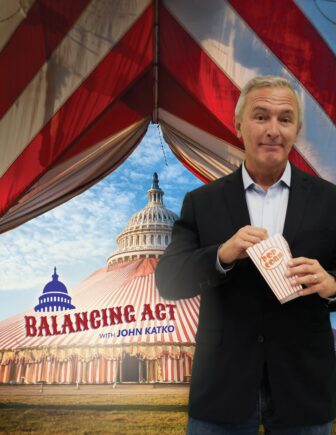
Katko even occasionally ribs himself. “Who am I? And why am I here?” he asked in the debut episode before tossing to a package lauding his credentials.
But Balancing Act dives into serious and polarizing issues, from inflation and nuclear energy to the Russian-Ukraine war and America’s role on the world stage. Guests have included former House Speaker Newt Gingrich, former U.S. Ambassador to the U.N. Nikki Haley and current members of the House Foreign Affairs Committee. One of the most recent episodes brought together trade officials from the Bush and Obama administrations to discuss tariffs.
The focus on collegiality and balance was apparent from the first episode. In Katko’s interview with Maryland’s Democratic U.S. Rep. Steny Hoyer, the two commended each other for working together in Congress, even in the face of backlash. Katko recalled the supportive voicemails Hoyer left him during times of scrutiny, which he said he still has.
Balancing Act is now the station’s second-most watched locally produced show, Gelman said. It’s also drawing a “younger than average audience,” bringing some balance to its longest-running, more traditional local program that holds the top spot, Ivory Tower.
New episodes of Balancing Act are currently released monthly with tentative plans to go weekly in July.
Correction: An earlier version of this story incorrectly described Nashville PBS’ Tennessee Crossroads as an hour-long series. Episodes are 30 minutes long.
Tarryn Mento previously worked with NJ PBS GM Joe Lee at WAER in Syracuse, N.Y. She recently spoke at a WCNY graduation event unrelated to this reporting and will receive a stipend for her remarks.





